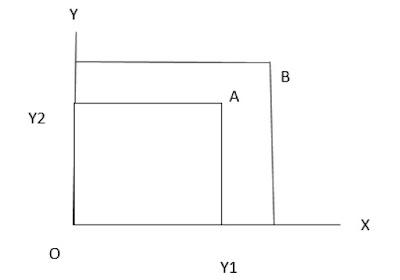
Isocline: • There can be number of possible output levels as shown in figure and least cost combination can be found out for these various output levels. (I have described about Least cost combination in next blog) • A line or curve connecting the least cost combinations of inputs for all output levels is known as isocline. Expansion path: • Of many isoclines, the isoclines which is considered to be the most appropriate over a production period is expansion path or scale line • At any particular time only one expansion path is possible Ridgeline: • Ridgeline represents the points of maximum output from each input, given a fixed amount of another input • Beyond the ridge line it is less economic to produce



